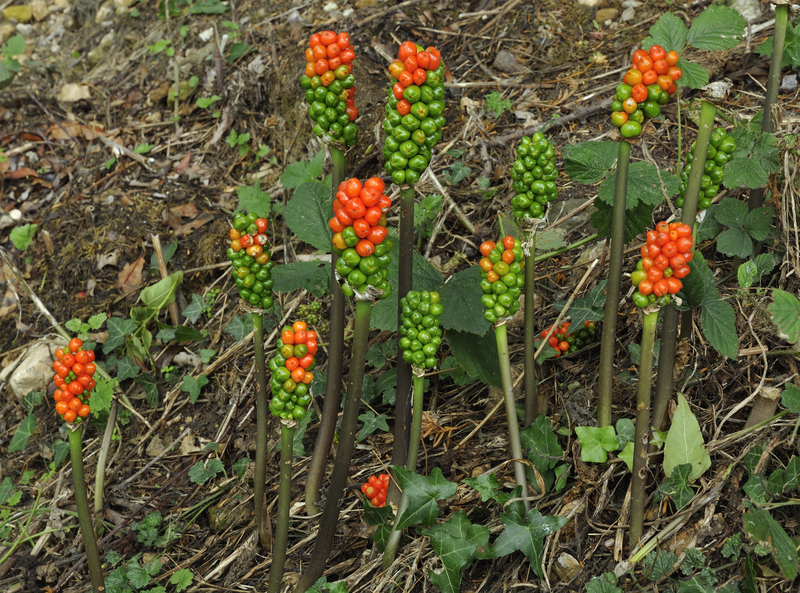Achieving a Hands-Free Garden with Cost-Effective Solutions
Posted on 01/09/2025
Achieving a Hands-Free Garden with Cost-Effective Solutions
If you've ever dreamt of a lush, productive garden but balked at the thought of endless hours of maintenance, you're not alone. In today's fast-paced world, hands-free gardening is becoming increasingly popular -- and with good reason. Whether you're a seasoned gardener or a newbie looking to create a beautiful green space that virtually takes care of itself, this comprehensive guide reveals how to establish a low-maintenance garden without breaking the bank. Dive in to discover practical, cost-effective solutions for hands-free gardening and enjoy the beauty of your yard with minimal effort.
Why Choose a Hands-Free Garden?
Traditional gardening can be a rewarding hobby, but it can also be time-consuming and physically demanding. By opting for a hands-free garden system, you'll reap a variety of benefits, such as:
- Saves time: Automates routine chores like watering and weeding.
- Reduces workload: Less bending, digging, or kneeling.
- Cost-efficient: Lowers expenses on maintenance, water, and fertilizers.
- Accessible for all: Great for people with mobility issues or busy schedules.
- Boosts sustainability: Encourages eco-friendly practices.
Wondering how to achieve a cost-effective, autonomous garden? Read on for proven strategies and innovative tools!

Planning Your Low-Maintenance Garden
The secret to creating a hands-off garden starts with smart planning. Here are a few foundational steps you should consider:
Analyze Your Garden Space
- Determine the amount of sunlight, shade, and wind your area receives.
- Easily accessible water sources will simplify irrigation.
- Select an appropriate layout for easy access and minimal intervention.
Choose the Right Plants
One of the pillars of a hands-free gardening experience is the selection of plants that require minimal care. Here are some tips:
- Native Plants: Choose species suited to your climate and soil for best results.
- Perennials: These plants come back year after year, reducing replanting efforts.
- Drought-Resistant Varieties: Ideal for reducing watering frequency.
- Ground Covers: Minimize weeds while keeping soil cool and moist.
Pro Tip: Group plants with similar water, light, and soil requirements for efficient maintenance.
Cost-Effective Hands-Free Gardening Solutions
Achieving a truly automated and affordable garden is all about the right mix of technology, design, and natural strategies. Let's look at the best low-cost hands-free gardening techniques and tools:
1. Automated Irrigation Systems
Manual watering is often the most time-consuming gardening task. Luckily, there are several inexpensive, hassle-free options:
- Drip Irrigation Kits: These deliver water straight to the roots, saving water and time.
- Soaker Hoses: Simple to set up and great for even, deep watering.
- Gravity-Fed Watering: Budget-friendly and effective for raised beds and small plots.
Pair these systems with a low-cost garden timer to ensure your plants are watered automatically, even when you're away.
2. Smart Mulching for Weed and Moisture Control
Mulching is your garden's best friend when it comes to minimizing labor. Organic mulches like wood chips, straw, or compost suppress weeds, retain moisture, and enrich soil. You can find affordable mulch at local garden centers or opt for free sources like:
- Collected autumn leaves
- Chipped branches (rent or borrow a chipper!)
- Grass clippings
- Newspaper or cardboard layers under wood chips
Proper mulching prevents weed seeds from seeing the light, keeping your beds hands-free and lush all season long.
3. Self-Sufficient Raised Beds and Containers
Raised beds and containers can make your gardening almost self-maintaining:
- Better drainage reduces root rot risk.
- Fewer weeds and pests.
- Easier to install automated irrigation and mulch application.
Build your own with reclaimed wood or upcycled materials for a truly budget-friendly solution. For added convenience, line the base with landscape fabric to further block weed growth.
4. Ground Cover Plants for Weed Suppression
Instead of laboring to pull weeds, enlist nature! Ground cover plants such as clover, creeping thyme, or ajuga provide dense foliage that naturally suppresses weeds while adding beauty and even benefiting pollinators.
- Covers bare soil so weeds can't get a foothold
- Reduces evaporation and keeps roots cool
- Many varieties are evergreen, so you enjoy year-round ground cover
5. Low-Maintenance Lawn Alternatives
Lawns can be a high-maintenance headache, requiring constant mowing, watering, and fertilizing. For a more hands-off landscape approach, consider:
- No-mow grass blends: Slow-growing or dwarf fescue varieties need trimming only once or twice a year.
- Artificial turf: Requires almost no care once installed (though up-front costs are higher, long-term savings are significant).
- Meadow lawns: Plant wildflowers and let them grow naturally -- beautiful and beneficial for wildlife.
A lawn-free garden is among the most powerful strategies for achieving a true hands-free landscape.
6. Smart Plant Choices for All-Season Interest
Plant wisely to ensure your garden looks great throughout the year with minimal intervention:
- Evergreens for durable, year-round color
- Bulbs that naturalize and multiply on their own
- Slow-growing trees or shrubs (no regular pruning required)
Opt for disease- and pest-resistant varieties whenever possible to cut down on maintenance and treatments.
7. Composting: Nature's Self-Sustaining Fertilizer
Skip expensive fertilizers and let compost do the heavy lifting! A simple compost pile or DIY bin can turn your food scraps and yard waste into rich soil. Here's how composting supports your maintenance-free garden:
- Improves soil structure and water retention
- Feeds plants continuously
- Reduces the need for chemical fertilizers
- Low-maintenance once established
Pro Tip: Try trench composting to feed garden beds directly with minimal effort.
8. Embrace Integrated Pest Management
Forget frequent pesticide applications. A hands-off pest control strategy combines several natural approaches:
- Invite beneficial insects (ladybugs, lacewings) by adding insectary plants.
- Floating row covers act as physical barriers to pests.
- Companion planting naturally repels unwanted bugs.
- Mulch barriers deter slugs and snails.
Let nature work for you -- creating a balanced ecosystem means less intervention over time.
Smart Technology for the Modern Hands-Free Garden
Tech advancements have made the dream of an automated garden more accessible than ever, and at increasingly affordable price points. Here's how smart gadgets can revolutionize your hands-free gardening experience:
Budget-Friendly Garden Automation Tools
- Soil Moisture Sensors: Monitor when your plants really need water to avoid over or under-watering.
- Solar-Powered Garden Lights: Illuminate your garden paths and beds without electricity or hassle.
- Robot Lawn Mowers: Though pricier up front, these can save hundreds of hours yearly if you have grass areas.
- Weather-Based Timers: Sync irrigation with local weather so you only water when necessary, saving money and effort.
Many of these tools can be found at reasonable prices, especially during seasonal sales or when purchased refurbished.
DIY Automation Hacks
- Repurpose old plastic bottles as slow-release waterers for pots and beds.
- Use recycled materials for creating garden edges, weed barriers, or even mini-greenhouses.
- Set up a simple rain barrel system to harvest water for your plants -- reducing both costs and manual work.
*A little DIY ingenuity goes a long way in transforming your garden into a thriving, self-sustaining space.*
Cost-Effective Maintenance Tips for Lasting Results
After your low-maintenance garden is established, these ongoing strategies will ensure it remains easy to care for and budget-friendly:
- Inspect periodically: Spend just 10-15 minutes a week to catch minor issues before they grow.
- Top up mulch annually: Refreshing mulch once or twice a year keeps weeds away and soil moist.
- Divide and conquer: Propagate existing plants to fill bare spots affordably.
- Use barriers: Landscape fabric, bricks, or pavers keep turf and weeds from sneaking into beds.
Remember, a truly hands-off garden still benefits from a little strategic attention on occasion. Small efforts at regular intervals prevent larger problems later on and keep your outdoor oasis thriving for years to come.

Frequently Asked Questions About Hands-Free Gardens
Is a totally hands-off garden possible?
While no garden is completely self-sufficient, modern solutions and good planning get you very close! Minimal involvement will be needed for routine checks and seasonal adjustments.
Are hands-free garden setups expensive?
Not at all! Many budget-friendly gardening solutions exist. Upcycled materials, native plants, and DIY projects keep costs down while maximizing results.
How much time will I save?
A well-designed low-maintenance garden can reduce time spent by 70% or more compared to traditional gardens, freeing you to enjoy your space instead of working in it.
Start Your Cost-Effective, Hands-Free Garden Journey Today!
With the tips, tools, and strategies outlined above, achieving a hands-free garden system on a budget is entirely possible. Choose the approaches that best fit your yard, budget, and lifestyle -- and watch as your garden transforms into a *vibrant, low-effort retreat*. The future of gardening is hands-off, cost-effective, and remarkably rewarding. Let your landscape thrive while you sit back and savor the beauty.
Ready to take the plunge? Evaluate your space, set your goals, and start small. Over time, you'll perfect your personal approach to affordable hands-free gardening -- making your dream garden a reality with less work and more wonder.

